Last Updated on November 1, 2021
When taking a trip to the local parts store, motorists are presented with a wide variety of cleaners and chemicals to choose from. For many, this presents an issue of sorts, as it can be difficult to determine the differences between each of these agents, and their particular uses.
Of these various products, brake cleaner, carb cleaner, and throttle body cleaner tend to be among the most widely used.
However, there also tends to be a significant amount of confusion surrounding the intended purpose for each, as well as whether or not these chemicals can be substituted for use outside of their intended purpose.
If you have ever been faced with a similar quandary, or simply wish to learn more about the uses of each of the above mentioned products, the following will answer your every question. Read on to learn the differences between carb, brake, and throttle body cleaners.
See Also: 5 Best Fuel Injector Cleaners
What Is Carb Cleaner?
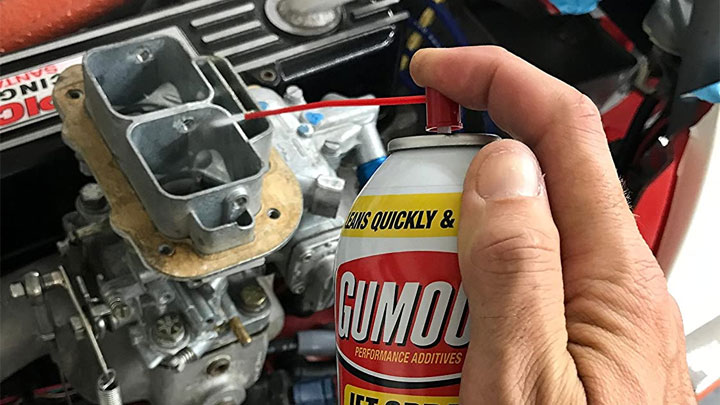
Carb cleaner is specifically designed to clean carburetors and carburetor-related components. A cleaner of this type is intended to break down built up varnish deposits within a carburetor.
This varnish comes as a natural byproduct of stale or water-logged gasoline, as it breaks down into a less volatile form. With time, this varnish clogs carburetor jets, thereby inhibiting fuel flow.
In relation to other cleaning solutions, carb cleaner tends to be less harsh on non-metallic surfaces. In most cases, carb cleaner will not damage rubber or plastic, nor will it break down paper or fiber gaskets. This is of significant value, especially when attempting to quickly clean a carburetor, in absence of a complete rebuild.
Carb cleaner can be purchased in both aerosol and bulk liquid forms, providing multiple solutions for any cleaning job. In its aerosol form, carburetor cleaner is most commonly used for light cleaning jobs, when one is simply attempting to remove varnish build-up from an assembly’s jets.
On the other hand, carb cleaner in its bulk liquid form is typically used for larger jobs, where a carb has been heavily soiled by varnish, requiring a lengthy soak.
Related: 10 Best Carb Cleaners
What Is Brake Cleaner?
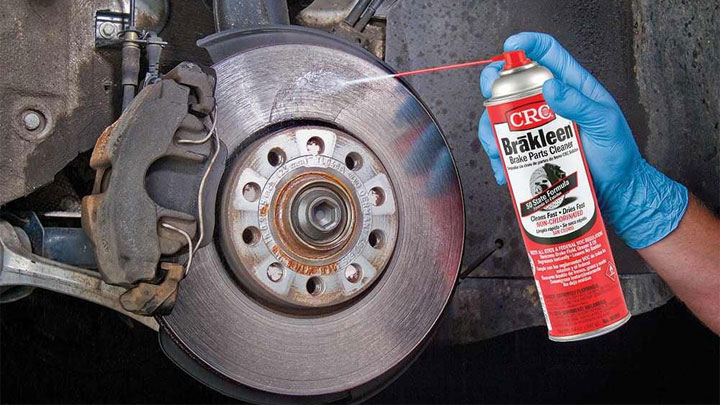
As its name would suggest, brake cleaner is primarily designed to remove dust, oil, and debris from brake-related components.
Brake cleaner comes in two popular forms, chlorinated, and non-chlorinated. For years, chlorinated brake cleaner served as the industry standard, though it has been slowly phased out due to environmental concerns. Approximately 2/3 of today’s brake cleaner products are of a non-chlorinated variety.
Brake cleaner’s most valuable attribute is that its base chemicals quickly evaporate, often in seconds. As a result, no residue is left behind following an initial application.
This is of immense importance, as optimal friction between a brake system’s pads and rotors, or shoes and drums is absolutely vital. This action would be inhibited by any cleaning compound that leaves behind residue after use.
As with any cleaning compound, brake cleaner should only be used in a well ventilated area, where fumes can readily dissipate. Additionally, many types of brake cleaners are highly flammable, and great care should be taken to eliminate any open ignition sources prior to use.
What Is Throttle Body Cleaner?
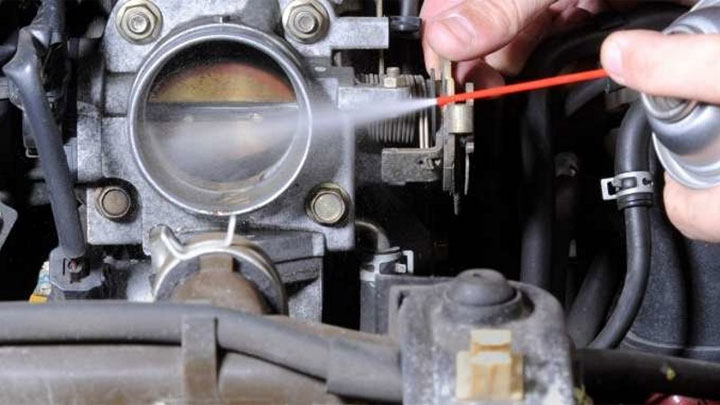
With time, an engine’s throttle body begins to accumulate carbon deposits, as a natural byproduct of combustion. These deposits can wreak havoc on a throttle body’s ability to accurately meter incoming air, as throttle plate actuation is impeded, which often results in slowed or erratic throttle response.
Throttle body cleaner is designed to remove carbon fouling from the throat and butterfly of a throttle body, in order to restore uniform functionality.
The beauty of throttle body cleaner is that it is specifically engineered to penetrate and break down stubborn carbon deposits, which are otherwise extremely difficult to remove.
The use of throttle body cleaner allows such deposits to be removed with minimally invasive means, and often eliminates the need for throttle body removal, in order to facilitate deep cleaning.
While carb cleaner reacts aggressively to deep seated carbon deposits, it is not overly harsh in many regards, This type of cleaner is generally considered sensor-safe, and also tends to be safe for use on many types of coatings.
This is of vast importance, as many newer throttle bodies now come coated with a protective lining. Many consumers also use throttle body cleaner as a substitute for starting fluid, though this practice is not advisable.
Related: 5 Best Throttle Body Cleaners
Can They Be Substituted For Each Other?
One of the most commonly asked automotive questions is that which relates to the substitution of various cleaning chemicals, for use outside of their intended purpose. To preface, it is always best to select your chemical of choice, based upon the job at hand.
All three of these cleaning agents are readily available at any auto parts store and are offered at prices that are highly comparable to one another. However, each of these chemicals can be substituted for additional uses, on a case by case basis.
Carb cleaner and throttle body cleaner are often used interchangeably in a pinch. It is important to realize that each of these chemicals is specifically designed to break down a particular substance.
Throttle body cleaner is ideal for use on carbon, while carb cleaner is capable of destroying varnish. Therefore interchanging these chemicals can reduce cleaning efficiency.
Brake cleaner, however, is not as suitable for an alternative. Of these three cleaning chemicals, brake cleaner tends to be the harshest and is quite capable of damaging gaskets, plastic surfaces, and rubber grommets.
Therefore, brake cleaner can cause adverse effects when sprayed around a plastic intake manifold, or onto rubber-tipped needle valves found in carburetors.
In limited instances, brake cleaner can be used to clean carburetors, as long as any non-metal components are first removed.
Likewise, carb and throttle body cleaners are not suitable for use on brake-related components. Each of these solutions is capable of leaving behind a light, oily residue, which can negatively impact brake operation.
When cleaning brake system components, brake cleaner is the only product for the job. Brake cleaner, due to its aggressive formula also tends to be quite effective at cleaning other components of an all-metallic construction.

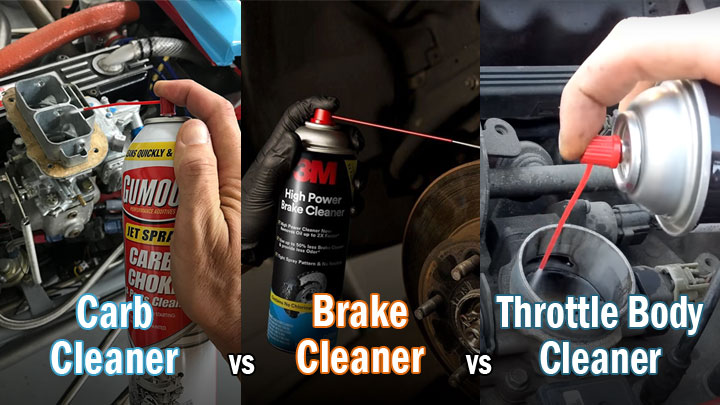
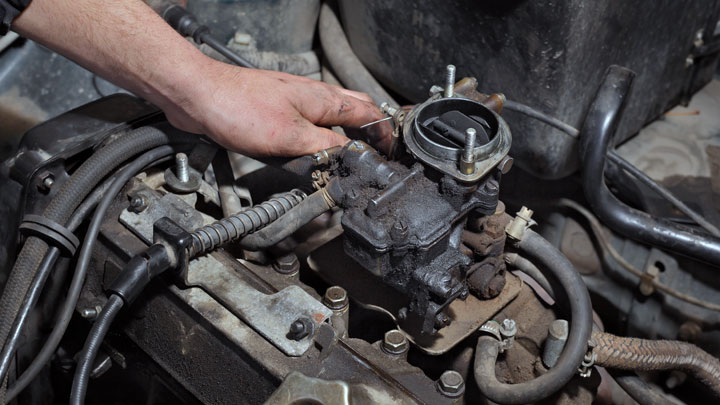
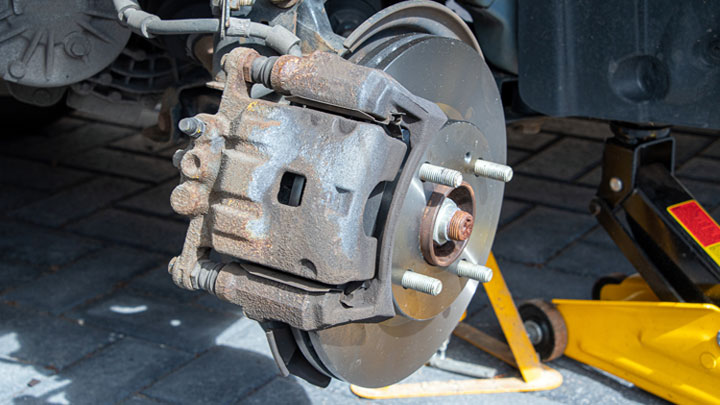

Thanks for the article. It was straight forward and as the title explains, it answered my exact question. A perfect, readily available, instructional for vehicle owners.
I do my own auto repairs, but I also do all my other repairs in life and many for others as well. I was thinking about cleaning a firearm though when I asked myself, then Google my question. You provided clarification useful in many applications. Thank you. Well done!
We get any job done better together.